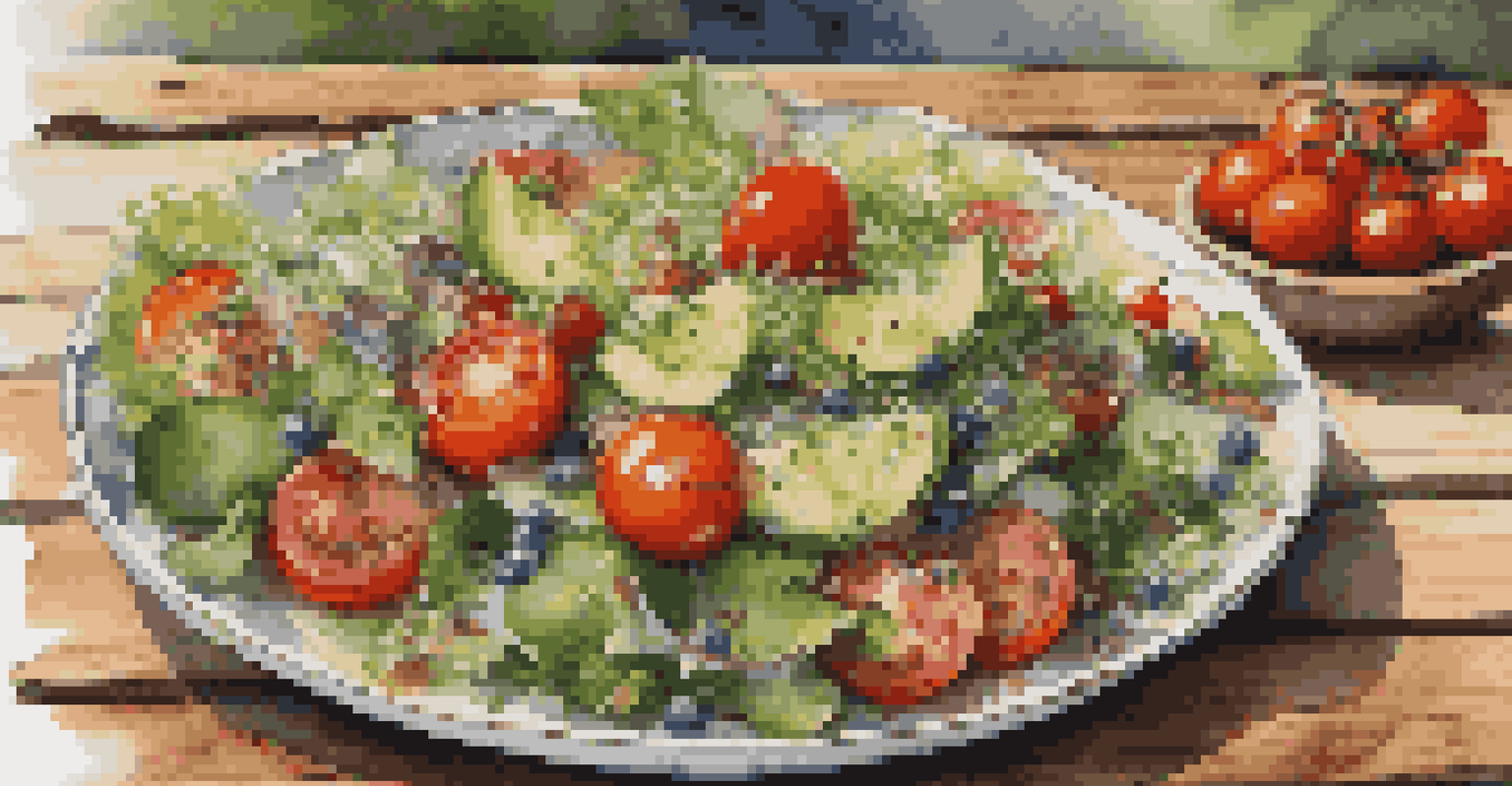Integrating Culinary Science into Nutrition Education Programs

Understanding Culinary Science and Nutrition Education
Culinary science is the study of cooking techniques and their effects on food. It combines the art of cooking with the science of nutrition, giving us insight into how flavors, textures, and nutrients work together. Integrating culinary science into nutrition education can transform how individuals learn about food and health.
Cooking is like love. It should be entered into with abandon or not at all.
Nutrition education typically focuses on the dietary aspects of health, emphasizing what to eat for optimal wellness. However, it often lacks the practical skills needed to prepare healthy meals. By adding culinary science, educators can provide hands-on experiences that bridge the gap between knowledge and action.
For example, teaching students to cook with whole foods not only improves their understanding of nutrition but also empowers them to make healthier choices. This practical approach fosters a deeper appreciation for food, leading to lasting lifestyle changes.
The Benefits of Culinary Skills in Nutrition Education
Culinary skills are essential for applying nutritional knowledge effectively. When individuals can prepare nutritious meals, they are more likely to choose healthy options. This practical skill set helps demystify the cooking process, making it accessible and enjoyable.

Moreover, cooking classes that focus on nutrition can improve participants' confidence in the kitchen. By engaging in hands-on activities, they develop a sense of ownership over their meals. This newfound confidence often translates into better dietary choices and healthier eating habits.
Culinary Science Enhances Nutrition Education
Integrating culinary science into nutrition education empowers individuals with practical cooking skills, bridging the gap between knowledge and healthy meal preparation.
For instance, a cooking class that teaches participants how to create a balanced meal can lead to increased vegetable consumption and reduced reliance on processed foods. This direct application of culinary skills reinforces the lessons learned in nutrition education.
Creating Engaging Curriculum with Culinary Science
An engaging curriculum that incorporates culinary science can capture students' interest and enhance learning outcomes. By using interactive cooking demonstrations and tastings, educators can make nutrition concepts more relatable. This experiential learning approach fosters curiosity and encourages exploration of diverse foods.
Let food be thy medicine and medicine be thy food.
Incorporating real-life scenarios, such as meal planning and budgeting, can further engage students. By connecting culinary science to everyday situations, learners can better grasp the importance of nutrition in their lives. This context makes the subject matter relevant and applicable.
For example, a lesson on meal prepping can teach students how to save time and money while eating healthier. This practical knowledge resonates with individuals, especially those with busy lifestyles, making it easier to adopt healthier eating habits.
Fostering Collaboration Between Nutritionists and Chefs
Collaboration between nutritionists and chefs can lead to innovative approaches in nutrition education. When these two professionals work together, they can create delicious, nutritious recipes that appeal to a wide audience. This partnership can enhance program offerings and attract more participants.
For instance, a nutritionist may provide insight into the health benefits of certain ingredients, while a chef can demonstrate how to prepare them in an appetizing way. This synergy not only enriches the learning experience but also promotes a deeper understanding of food.
Collaboration Boosts Healthy Cooking
Working together, nutritionists and chefs can create appealing and nutritious recipes that make healthy eating more accessible and enjoyable.
Moreover, collaborative efforts can help break down misconceptions about healthy eating. By showcasing that healthy meals can also be flavorful, they can encourage individuals to embrace nutritious options without sacrificing taste.
Addressing Cultural Diversity in Culinary Nutrition Education
Incorporating cultural diversity into culinary nutrition education is vital for relevance and inclusivity. Different cultures have unique culinary traditions that can offer valuable insights into healthy eating practices. By embracing these diverse perspectives, educators can create a more comprehensive learning experience.
For example, teaching students about traditional dishes from various cultures can highlight the nutritional benefits of whole, minimally processed foods. This approach also fosters respect for different food practices, making the curriculum more engaging and relatable.
Furthermore, addressing cultural preferences can empower individuals to make healthier choices within their own culinary contexts. When students see how nutritious foods can be integrated into their traditions, they are more likely to adopt healthier behaviors.
Utilizing Technology to Enhance Culinary Nutrition Programs
Technology plays a crucial role in modernizing culinary nutrition education. Online platforms, apps, and social media can provide accessible resources and interactive learning opportunities. These tools can help bridge the gap between theoretical knowledge and practical application.
For instance, cooking tutorials on social media can inspire individuals to experiment with healthy recipes at home. Additionally, apps that track nutritional intake can help users make informed dietary choices. These technological advancements make learning about nutrition engaging and fun.
Technology Modernizes Nutrition Learning
Utilizing technology, such as online classes and apps, enhances culinary nutrition education by providing interactive and engaging resources for learners.
Moreover, virtual cooking classes have gained popularity, especially in recent years. They allow participants to learn culinary skills from the comfort of their homes, expanding the reach of nutrition education beyond traditional settings.
Measuring the Impact of Culinary Science in Nutrition Education
Evaluating the impact of integrating culinary science into nutrition education is essential for program improvement. By assessing participants' knowledge, attitudes, and behaviors regarding nutrition, educators can gauge the effectiveness of their methods. This feedback can inform future curriculum development.
Surveys, interviews, and cooking demonstrations can provide valuable insights into participants' learning outcomes. For example, tracking changes in dietary habits before and after a program can reveal the influence of culinary skills on food choices.

Ultimately, measuring impact helps justify the integration of culinary science into nutrition education. By demonstrating positive outcomes, programs can secure funding and support, ensuring their sustainability and reach within the community.
The Future of Culinary Science in Nutrition Education
The future of culinary science in nutrition education looks promising as more programs recognize its value. As awareness of the importance of practical cooking skills grows, educational institutions are likely to incorporate culinary science into their curriculums. This shift can lead to a more well-rounded approach to health education.
Moreover, as public interest in nutrition continues to rise, the demand for innovative programs will increase. Culinary science can play a pivotal role in addressing health issues by equipping individuals with the skills they need to make healthier food choices.
In conclusion, the integration of culinary science into nutrition education can lead to a healthier, more informed society. By embracing this holistic approach, we can empower individuals to take charge of their health through food.